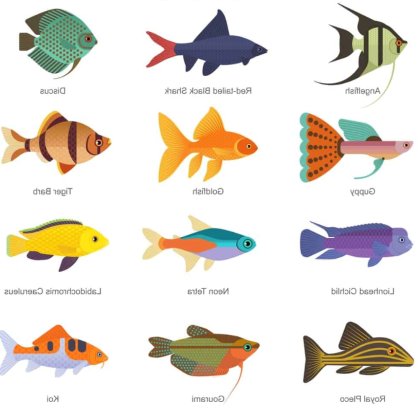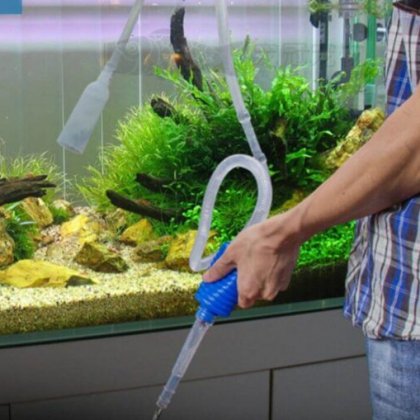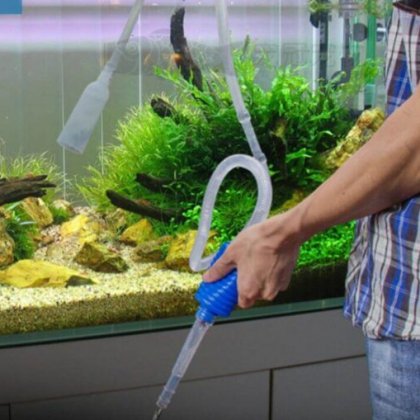Quick Facts :
Care Level:Moderate
Temperament:Aggressive
Maximum Size:12"
Minimum Tank Size:75 Gallons
Water Conditions:68-80° F, pH 6.5-7.5, dH 5-12
Diet:Omnivore
Origin:Northeastern Mexico, Texas
Family:Cichlidae
Species:Texas Cichlids
Aquarium Type:Cichlid-New-World
Texas Cichlid Aquarium Care, Feeding and Native Habitat Information
The Texas Cichlid is the only known cichlid species that naturally resides in the United States, they are native to the lower Rio Grande drainage in Southern Texas and Northeastern Mexico; they are very popular as game fish (Rio Grande Perch/Mojarra de Norte) which has led to their introduction to other lakes, ponds, and rivers with similar conditions of the Rio Grande. In the aquarium Texas Cichlids are recommended for hobbyists that already possess some experience as the species can show increasing aggression as they mature. The Texas Cichlid is one of several cichlid species in where they will develop a nuchal hump on the front of their heads as they mature over the years (males and females can both develop humps in this species). Males of the species usually grow faster, are larger at maturity, and will have more vivid colors; they will also develop extended dorsal and anal fins. The species is often confused with and sold as their cousins, the Green/Blue Texas Cichlids (Hericthys carpintis) as well as other "Herichthys sp." morphs and variants. Texas Cichlids are common, popular, and are very enjoyable to own; making them readily available within the hobby at reasonable prices (their massive spawn yields help with this as well).
The Texas Cichlid should be housed in a aquarium of at least 75 gallons (125 gallons for multiple specimens) with a sand substrate and should be provided with an adequate amount of rock caves or pieces of driftwood to hide among and use as territory. If live plants are used, make sure they are either secured to driftwood, rock, or planted in pots below the substrate as they will either be shredded or relocated. Light intensity is not an issue, although the species prefers to have the option for shade it its disposal. Texas Cichlids are a hardy species, but are messy eaters and can be sensitive to high levels of nitrates; they should be provided with strong and efficient biological, mechanical, and chemical filtration in order to ensure clean water conditions and keep nitrate levels down. Aggression varies by individual (as with most cichlids) and until they grow to be larger (at least 6"), they are highly prone to being bullied by other aggressive species. Care should be taken when choosing tank mates as Texas Cichlids can be highly aggressive with other aquarium inhabitants; intended coexisting species should be able to defend themselves as well as one will not tolerate being bullied. Compatible tank mates are usually other aggressive cichlids such as Oscars, Jaguar Cichlids, and Jack Dempseys, Robust Plecostomus variants are also a good choice as they are naturally armored and not usually perceived as a threat.
The Texas Cichlid is an omnivore and naturally eats worms, insects, small invertebrates, and plant matter in the wild. They should be provided with a variety of meaty foods (which ensures good health and contributes to coloration intensity) such as live, frozen, or freeze-dried krill, ghost shrimp, crickets, small crayfish, bloodworms, earthworms, as well as vitamin-enriched, omnivore oriented flake and pellet food items. Feed one or twice daily.
Breeding Texas Cichlids is considered to be very easy and can be triggered by a temperature increase of several degrees and a few unscheduled water changes; the addition of dither fish (a couple Silver Dollars or Convict Cichlids) is also a good start as it will help with a pair to form a bond against their common "enemy" and should direct some of the aggression away from the female. Breeding has been successful in 75-90 gallon setups, but a 125 gallon tank is recommended as it will increase the chances of the females� survival as well as the survival of the dither fish. A pair will usually spawn when the female reaches roughly 3" and the male is 4". The female will clean a flat surface (commonly rock, slate, or driftwood) and lay between 500-1000 eggs while the male follows up by fertilizing them. The pair will then dig a pit in the substrate and the female will go back to the eggs and tend to and protect them while the male fiercely guards their territory. The pair will be extremely aggressive at this stage and the female is likely to take aggression from the male (this is where the dither fish will continue to help out). The female will help the fry while they hatch after 3-5 days and will then immediately move them to the pit in the substrate for protection. The male is very protective of the fry and may even perceive the female as a threat to them, often attacking her as a result; some hobbyists prefer to use a divider at this stage instead of dither fish. The fry will be free-swimming within a week after they consume their yolk sacs; the fry will feed on organic particles for another week and will then be able to accept crushed flake food and baby brine shrimp. Sometimes the parents may become spooked or confused and will end up eating the fry; because of this, the fry are often removed once they are .5"-.75" in length.
No reviews found!



























No comments found for this product. Be the first to comment!